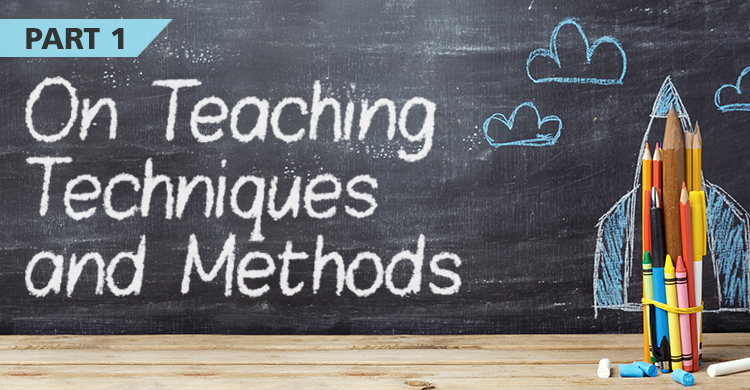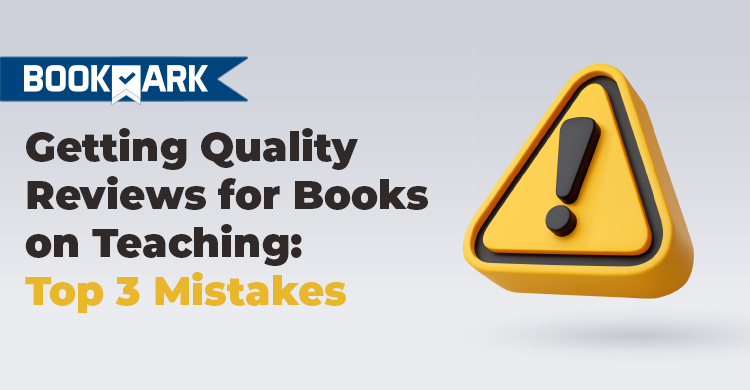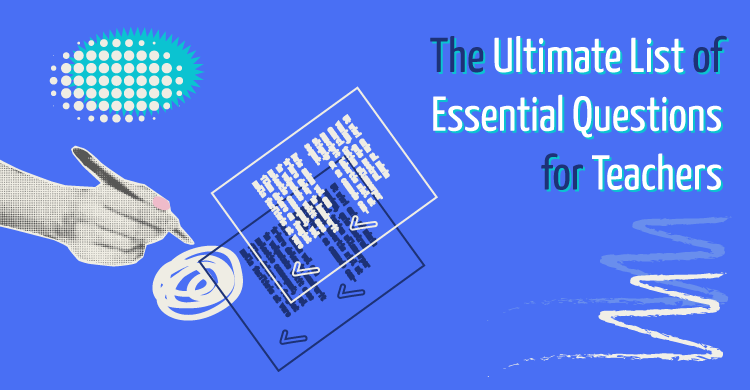On Teaching Techniques and Methods: Reflections of an Experienced Teacher
By Ralph Rhodes, retired social studies teacher, Council Rock High School, Newtown, Pennsylvania
Edited by Elliott Seif, author of Teaching for Lifelong Learning: How to Prepare Students for a Changing World
Editor’s note: Many years ago, I worked with Ralph Rhodes who, upon his retirement from teaching, wrote this paper with the intention of passing on some of his teaching wisdom to others. I have divided his reflections into two separate blogs—this one on “doing,” i.e., teaching techniques and methods, and the second on “being” or determining who you are in the classroom, which will be posted at a later date.
I have edited his work to make it more general and fit with today’s times, but there is a lot of wisdom about teaching at any level that is presented here. Enjoy!
My fellow educators:
Over the last 22 years, I have consistently evaluated my own teaching. For 10 of those years, I have had my students do the same. The following teaching techniques, methods, and suggestions come from these self and student critiques. Since we all have our own teaching styles, these suggestions may or may not be appropriate for you. However, I hope you will find some of these teaching techniques and methods useful in your own teaching situations.
- Build mystery and inquiry into your lessons.
- Review, review, and more review.
- Use props and other methods to make learning more concrete.
- Be aware of the learning environment.
- Find out how your students individually learn.
- Get as many students engaged as possible.
- Create a research component for each unit and end with some kind of fun culminating activity.
- Develop an open classroom environment with clear limits you can enforce.
- Teach by building on what students have in their “cerebral data bank.”
- When appropriate, cultivate a childlike atmosphere in class.
Often, I found that students had lost the ability to figure out and seek out answers to problems after many years of schooling. One way to rekindle this ability is to bring challenges to students in the form of puzzles and games. For example, I would sometimes bring to class a little-known relic from a time period under study and have students ask 20 questions to guess what it is.
Another idea: Present problems for them to solve and have resources ready for them to use to find answers. For example, I created a mystery game where each student was given a short clue on an index card, and I would ask students to work together as a class to figure out “whodunit” or what caused it.
Avoid a “hit-and-run curriculum.” Make sure you know what your goals are, teach to your goals, and then review, review, review. Share your goals on what you want your students to learn in a specific time frame and always try to end the time by asking them to demonstrate what you taught them. Make a strong effort to start each day reviewing what you did the day before. Give one or more quizzes as review and discussion before any big unit test. Offer a midterm as a formative assessment, even if it is not required. Find a way to review and apply what they learned in other units. Have them keep a vocabulary list, personalize learning in a journal, or complete reinforcing homework assignments. The more ways you can get them to interact with the material, review, summarize, synthesize, etc., the better.
Find ways to use props and other means to demonstrate and explain key ideas and turn the abstract into something concrete. I would bring in a fan and a vacuum cleaner to demonstrate how the Federal Reserve Bank tries to raise and lower the money supply to influence inflation or recessions. I would create a chain reaction using six mouse traps, six ping pong balls and a dart gun to illustrate how the assassination of an archduke caused World War I. I drew cartoon characters or told a story to illustrate important ideas.
Don’t hesitate to be a technique thief; ask other teachers what they do to teach a topic and make the learning more concrete—what props, methods, stories, and other means they use.
Do what you can to make a classroom comfortable. Monitor classroom temperature and air circulation. Make sure all kids see the board and adjust the seating to fit the lesson and the style of teaching to promote a more student-centered and less teacher-dominated classroom. Use a circle or other more open arrangement so students can talk to each other and not have their backs to each other.
Use diagnostic tests, teacher observations, and other means to note differences in how students learn. Try your best to provide for these differences.
For example, take into account differences between primarily visual and kinesthetic-tactile learners with large index cards, each listing a key vocabulary word or the cause of a major historical event. Each card may have a different color to reinforce differences. You can put magnetic tape on the back of each card and place the cards on the board, rearrange the order, or have students do the matching and sorting. This display, which takes into account student differences in learning, is helpful in teaching and in reviewing. It’s also great for teaching cause and effect, understanding key concepts, and sorting, sequencing, and determining cause and effect.
When teaching a difficult abstract concept, I would often stop my lesson and have students pair with a neighbor to explain it in their own way or make a drawing to better understand it.
It’s easy to let a few students dominate class involvement. To get greater numbers of students engaged, I sometimes called on students who were quiet. If this is painful for the terminally shy, you can find other ways for them to share in the lesson, such as writing their thoughts down in a journal before sharing. If you want to improve class participation, ask a question and then let them write an answer down, share it with a partner, and then share it with the class. This think-pair-share technique takes more time but it promotes more discussion and gets more students involved.
Also, make it clear to your students that teaching and learning is a two-way street. I would often start the year with a communication game where I asked my students to draw an object I was thinking of while I used only verbal descriptions of the object, not allowing any student questions or requests. I would go fast, use difficult vocabulary, and be purposefully vague. When my verbal explanation for a simple airplane ended up looking like abstract art or a house on their papers, I would ask them what was missing in this learning experience, and they would usually answer by saying that what’s missing are their questions and their requests for me to slow down, to define key words, and to give more exact explanations. I would then do it again with a new object and allow questions and other feedback, making teaching and learning a two-way street. This set the tone for each year.
Research activities, where students find and evaluate information to help them answer questions, develop projects, and more not only teaches students many useful skills but also allows them the freedom to explore additional topics that interest them in a unit. Culminating activities, such as mock trials, personal diaries or scrapbooks, posters, or debates, offer students a chance to apply and reinforce what they have learned, and helps them anchor what was taught in their long-term memory.
I like an open classroom, where students have a chance to frequently participate and even confront me while also having some clear limits. My classroom rule was that students must show respect for others and use respectful language in the classroom. I made sure to follow the same rules, and when I needed to confront students, I did it respectfully and with dignity.
Also, I would always try to make confrontations as private as possible. I would deal early with problem students in order to nip the problem in the bud and prevent potentially difficult and challenging situations from getting worse. I made it a point to chat with their other teachers, talk with guidance personnel, or call home if appropriate. I also made an effort to take into account the positive traits and strengths of all students and used positive reinforcement as much as possible.
I made a strong effort to find out what my students were thinking about and what their experiences were so I could better connect with them. I would try to learn what they watched on TV, what they did on social media, what music they liked, what movies they’d seen, what issues were important to them. When possible, I integrated what I knew about them into my teaching.
How can we get back to a time when students were eager to learn and most were very willing to get involved and eagerly give an answer to a question? I believe that it first requires that we as teachers have a childlike spirit. All of us need to look for reasons to be children again.
To try to get students to rekindle the desire to participate often and with enthusiasm, I sometimes told them to bring their desks closer together for a story and had them pretend they just had their cookies, milk and a nap. One year, I came into class singing and pretending to be Mr. Rogers, and then I told a story relevant to the lesson.
One suggestion: Walk around the class often, making quality eye contact and personal comments to those who are not big class participants. Develop an unusual walk or gestures to add to your lessons. Figure out your own ways to rekindle a childlike excitement. Your students may think you are strange, but this attitude will reawaken curiosity and interest, and your lessons will stick with your students and rekindle the spirit that makes a classroom come alive.






